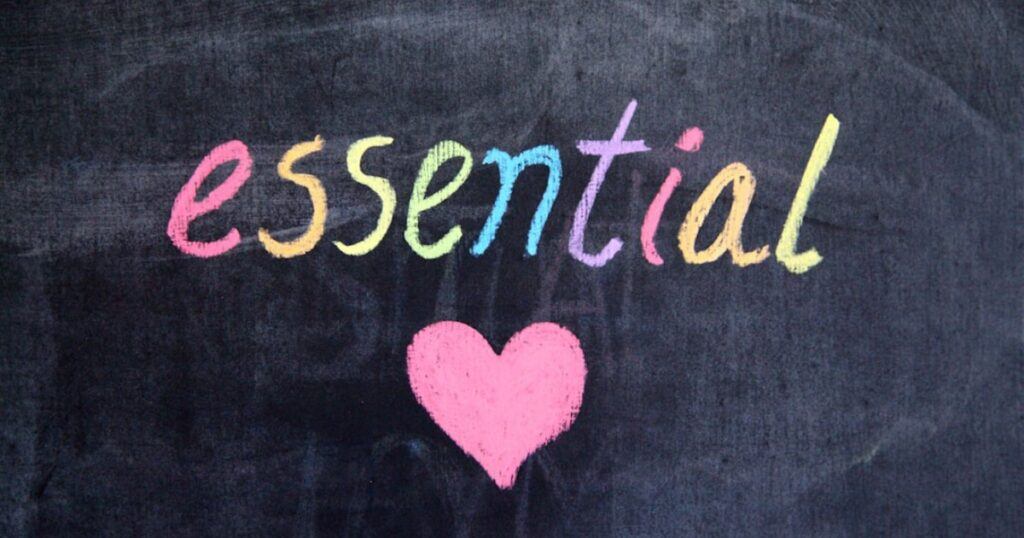When I think about the conversations that have had the greatest impact on me, it’s not always the words that were spoken that stand out, but rather the feeling of truly being heard and understood. This profound connection comes from the art of active listening. It’s a skill that not only fosters deeper relationships but also enhances our ability to empathize and respond genuinely. Here’s my take on how mastering active listening can transform our interactions and help us connect meaningfully with others.
Category: Soft Skills
Understanding Active Listening
Active listening is more than just hearing words; it’s about engaging fully with the speaker, both intellectually and emotionally. When I practice active listening, I’m not just passively receiving information. Instead, I’m actively involved in the communication process, seeking to understand the speaker’s message, emotions, and perspective.
The Benefits of Active Listening
One of the most compelling reasons I strive to be an active listener is the multitude of benefits it brings to my personal and professional life:
- Strengthening Relationships: When I actively listen, I show others that I value their thoughts and feelings. This validation strengthens our bond and builds trust.
- Improving Communication: Active listening reduces misunderstandings and ensures that the message is clearly received and understood.
- Enhancing Empathy: By putting myself in the speaker’s shoes, I develop a deeper sense of empathy and understanding.
- Boosting Problem-Solving Skills: Listening actively allows me to fully grasp the situation, leading to more effective solutions and resolutions.
- Building Respect and Rapport: When I listen attentively, it demonstrates respect and fosters mutual respect and rapport.

Key Components of Active Listening
To master active listening, I’ve found that it’s essential to focus on several key components:
- Give Full Attention: This means setting aside distractions and focusing entirely on the speaker. I make eye contact, nod occasionally, and use body language that shows I’m engaged.
- Show That You’re Listening: I respond with verbal affirmations like “I see,” “I understand,” or “That’s interesting.” These small cues let the speaker know that I’m present and attentive.
- Reflect and Paraphrase: To ensure I understand the message, I often repeat back what I’ve heard in my own words. This not only clarifies any confusion but also shows the speaker that I’m truly listening.
- Ask Questions: By asking open-ended questions, I encourage the speaker to elaborate and share more details. It also demonstrates my genuine interest in their perspective.
- Avoid Interrupting: Patience is key. I resist the urge to jump in with my own thoughts or solutions and allow the speaker to finish their point.
- Respond Thoughtfully: When it’s my turn to speak, I take a moment to consider my response. This thoughtful approach ensures that my reply is relevant and respectful.
Challenges and How to Overcome Them
Even with the best intentions, I sometimes face challenges in practicing active listening. Here are a few common obstacles and how I work to overcome them:
- Distractions: In our fast-paced world, distractions are everywhere. To combat this, I create a conducive environment for conversations by minimizing noise and setting aside my phone or other distractions.
- Prejudgments: It’s easy to form opinions before fully hearing someone out. I remind myself to keep an open mind and reserve judgment until I’ve heard the entire message.
- Emotional Reactions: Strong emotions can hinder my ability to listen objectively. When this happens, I take a deep breath and focus on remaining calm and composed.
- Impatience: Sometimes, I find myself eager to share my thoughts. To counter this, I practice patience and remind myself of the importance of letting the speaker finish their point.
Practical Tips for Developing Active Listening Skills
Here are some practical tips that have helped me enhance my active listening skills:
- Practice Mindfulness: Being present in the moment allows me to fully engage with the speaker. Mindfulness practices, such as meditation, have improved my ability to stay focused.
- Record and Reflect: After significant conversations, I sometimes jot down key points and reflect on how well I listened. This self-reflection helps me identify areas for improvement.
- Seek Feedback: I ask trusted friends or colleagues for feedback on my listening skills. Their insights provide valuable perspectives on how I can improve.
- Participate in Active Listening Exercises: There are various exercises designed to improve listening skills. I engage in activities like role-playing or group discussions to practice and refine my abilities.
- Set Intentions: Before entering a conversation, I set a clear intention to listen actively. This mindset prepares me to be fully present and engaged.

Real-Life Applications of Active Listening
I’ve found that active listening has numerous practical applications in daily life:
- In Personal Relationships: Whether it’s with family, friends, or a partner, active listening fosters deeper connections and mutual understanding.
- In the Workplace: In professional settings, active listening enhances teamwork, collaboration, and conflict resolution. It also demonstrates leadership and emotional intelligence.
- In Conflict Resolution: When tensions arise, active listening helps de-escalate conflicts by ensuring that all parties feel heard and respected.
- In Learning Environments: As a student or teacher, active listening facilitates effective learning and knowledge retention.
Conclusion: The Power of Being Heard
Mastering the art of active listening has transformed the way I connect with others. It’s a skill that requires practice and patience, but the rewards are immense. By truly listening, I not only enrich my relationships but also contribute to a more empathetic and understanding world. So, let’s all take a moment to pause, listen, and truly hear one another. The connections we build through active listening are the foundation of meaningful and lasting relationships.
Wouldn’t you agree?



Active listening, as highlighted in the article, is an essential skill often underestimated in its transformative power. From an expert perspective as a life and business coach, mastering this art isn’t just about enhancing communication—it’s about fostering a profound sense of empathy that can bridge cultural, professional, and even generational divides.
An intriguing layer to explore is how active listening might differ across various contexts. For instance, in conflict resolution, the focus may shift toward listening for underlying emotions and unspoken concerns, while in leadership, it often involves listening for innovative ideas and fostering collaboration. Understanding these nuances can elevate active listening from a skill to a strategic tool.
Another angle worth discussing is the neuroscience behind active listening. Studies suggest that genuine, engaged listening activates parts of the brain associated with empathy and understanding, potentially creating a feedback loop that strengthens relationships over time. It’s fascinating to consider how consciously practicing active listening could even rewire our cognitive habits, making us naturally more attentive and empathetic.
Lastly, in a world dominated by digital communication, how does one adapt active listening to virtual or asynchronous environments? Can tools like video calls or collaborative platforms truly replicate the depth of in-person listening, or do they demand an entirely new approach to connecting with others?
Hey, this is such a comprehensive list of ideas on the topic. The question on the differences between face-to-face and the digital world is crucial when it comes to active listening. I do think that it boils down to our personality types. For me, I can connect well regardless of the medium in use.
However, this doesn’t mean everyone else can do this. Thus, it’s not about the new approaches but about the personality. If we can first identify our individual personalities, we can then adjust whenever we need to. I hope this helps. Just let me know your thoughts in the comments below.
John
I completely agree that feeling truly heard can make such a difference, whether in personal connections or professional settings.
Your mention of challenges like distractions and emotional reactions really resonated with me. I often find myself battling impatience during conversations, and your tip about mindfulness and setting intentions is a great reminder to stay present.
I’d love to hear your thoughts on how active listening might differ across cultures or in digital vs. face-to-face communication. Have you noticed any unique challenges or techniques in these contexts?
Thank you for sharing such a thoughtful perspective on this important skill!
Hey, Roopesh,
Great questions. But first, thanks for stopping by and reading. Second, cultures are very important parts of our humanity. I do believe every species has their own cultures, too. I would suggest learning from different cultures and the differences between face-to-face meeting and virtual, and this learning can only be done through trial and error. It can only be experienced. We also experience the same things differently based on our personalities.
John